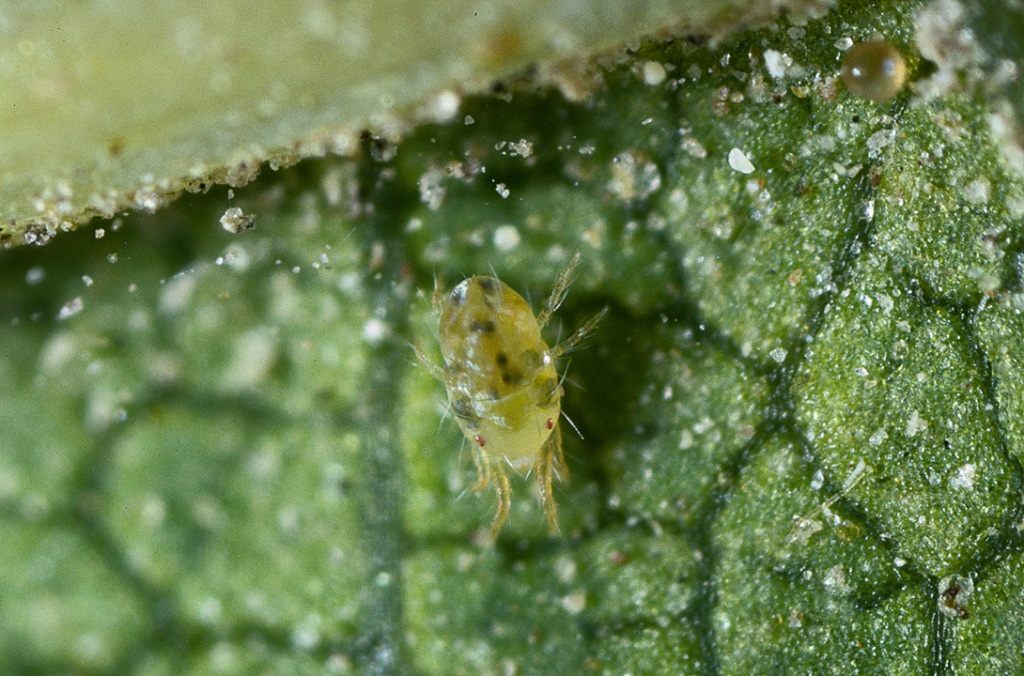Adapted from the article “Pacific spider mite control at hull split in almonds” by David Haviland, Entomology Farm Advisor, UC Cooperative Extension, Kern Co. in the April 2010 Sacramento Valley Almond News.
Hull split is one of the most critical times of the year for managing spider mites in almonds. At this time, hot weather, dusty conditions, tree stress due to crop load, and reduced irrigation can all cause significant outbreaks of spider mites. Hull split is also often the last opportunity to utilize miticides in a spray program due to PHIs, and get a ‘free ride’ with a navel orangeworm spray. There are many new miticides available for mite control. However, not all fields require hull split miticide sprays. In many cases, beneficials are sufficient to keep spider mite populations in check.

Pacific Spider Mite
Is Treatment Needed? Monitoring and treatment guidelines can be found in the UC Pest Management Guidelines for Almonds. Treatment decisions are based on the percentage of leaves with mites. If no predators are present, treatments should be made if about 25% of leaves have mites on them. If predators are present, treatments can be held off until about 50% of the leaves are infested. Sampling accuracy increases as the number of trees and number of areas in the field sampled increases.
Also take into account additional information such as drought stress to the trees and mite history within the block. At hull split it is also wise to adapt the thresholds a little to consider that hull split may be the last opportunity to get into the field and spray before harvest begins.
Choosing a Miticide. There are several miticides to choose from at hull split. The most commonly used include Envidor, Fujimite, Acramite, Zeal, and Omite. Each of these products can do well at hull split, depending on the goal. Remember that 415 Oil is, by itself, a miticide. Rates of 1% by volume with other miticides or insecticides will assist in mite control. Rates of 2% can be very effective at suppressing mite populations while maintaining biological control organisms.
In three years of UC trials in Kern County, Fujimite and Envidor provided the best overall control at hull split (Table 1). Plots treated with these products either did not, or rarely had mite populations return to pretreatment levels for the duration of the trial. Pros and cons are that Fujimite acts very quickly and has long residual, but is highly toxic to predatory mites. Envidor has long residual and is safer on predatory mites, but takes longer to work. Acramite and Zeal also provided excellent knockdown of mites for a period of three to four weeks. Both products work quickly and are safe to predatory insects, though Zeal is highly toxic to predatory mites. Omite also continues to be an option, though its use decreases each year due to the availability of the reduced-risk miticides previously described.
Table 1. Effects of hull-split sprays on residual control of spider mites, Kern County, 2006-2008.

1Most treatments were made with the addition of 1% 415 oil at a water volume of 200 GPA.
2Not evaluated in that year.


Leave a Reply